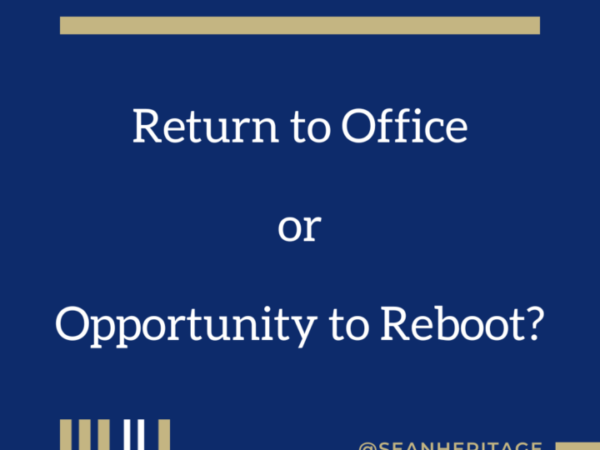Life is an adventure and WE have every opportunity to both succeed and fail as WE try new things, experiment with new ideas and create opportunities to both improve ourselves and those around us. Life is easier if WE stay inside our comfort zone, do the things WE are told and stick to the manual, but what fun is that? I must admit, I did not adopt that philosophy early enough in life, but it is one that has provided me with great joy since doing so. Recently, WE have begun to truly embrace the experimentation approach to leadership at work, as WE strive to write our manual instead of blindly adhering to the one that has been passed down to US from those who WE relieved (though in most cases it serves as a solid starting point). Within the NIOC Pensacola Laboratory, the three experiments WE have enjoyed of late include 360-degree performance counseling, leading without positional authority and doing our part to begin creating a culture of collective ownership across the community. This post is about the first of these three.
Last summer, I had the privilege of spending half of a day at Google, where the objective was to expose us to a culture very different than what WE enjoy in the military. It opened my eyes to what WE could be and, in my opinion, more of what WE should be. Over the last month WE turned Chief Petty Officer and Chief Warrant Officer Mid-term counseling into phase two of OUR 360-degree feedback initiative. Because every action should be purposeful, this is the WHY behind OUR action:
- Mid-term counseling has turned into a paper drill in many places (no meaningful conversation to accompany the “wink, wink, nudge, nudge, consider yourself counseled” approach)
- Too many people are more concerned about pleasing their seniors than working with their peers and leading their juniors
- The most constructive feedback comes from our subordinates and our peers
- Counseling is about making each other better and therefore must be meaningful
Our approach was to specifically choose peers and subordinates who would take this especially seriously and provide constructive feedback about their chain of command. The result did not disappoint. WE had seamen clearly articulating what they admired about their Division and Department Chiefs, as well as offering them ideas of what they could be doing better. WE had Chiefs who were truly interested in making the Chief’s Mess even stronger, as well as celebrating specific attributes of their peers and indirectly advocating on behalf of their peers to their shared reporting seniors. Unfortunately, WE also saw that not all seniors are paying enough attention to their juniors to meaningfully assess their strengths and areas for improvement. One of the coolest things about this evolution was the willingness of nearly every participant to put his or her name on the counseling sheet. Though some desired to remain anonymous (in the end WE ensured all remained anonymous for Phase II), most took ownership as a way of stating “I am proud of my input, I appreciated the opportunity, I have a strong desire to make all with whom I serve better and I would like it if others would do the same for me.”
WE have yet to decide where to go with Phase III of this experiment, and have charged the Chiefs and Chief Warrant Officer (the recipients this time around), with making recommendations for the next steps. WE will ensure our Petty Officers get the benefit of 360-degree feedback during their next mid-term counseling, as we work to further our quest to create a culture that is even more focused on continual improvement across the 360-degree array. As WE state in OUR Command Philosophy, one of OUR four Command Values is…
“CONTINUAL IMPROVEMENT: Not a single thing we do as a team is perfect and not a single trait of any individual is without room for improvement. Each of us will leave this command having improved it in some way and each of us will depart a better Sailor, person, follower and leader.
We will each leave our legacy with the command and our Shipmates; The command and our Shipmates will leave a legacy with us“
OUR values will continue to be more than words on paper and WE will continue to experiment with each and every one of them as WE write OUR own manual and share it with others who are interested in learning WITH us. At the same time, WE continue to choose to either validate or change the status quo by asking “WHY?” at every turn.
- How might your team benefit from 360-degree feedback?
- When was the last time you asked a peer or junior for critical feedback on your performance?
- Are you willing to advocate for a peer, help a senior become even better, and/or seriously consider feedback from a 360-degree array?



Great post, as usual. I submit that if you work effectively with your peers and effectively lead and develop your juniors, a side effect is that you WILL please your seniors — the ones that matter.
As someone new to this environment, I will say that I am already surprised by the willingness of others around me to assist me. We only need to be willing to accept that assistance and guidance!
You will always succeeded in your experiments because 360 degree feedback is a complete and comprehensive way to get quick feedback from employee through a proper channel.